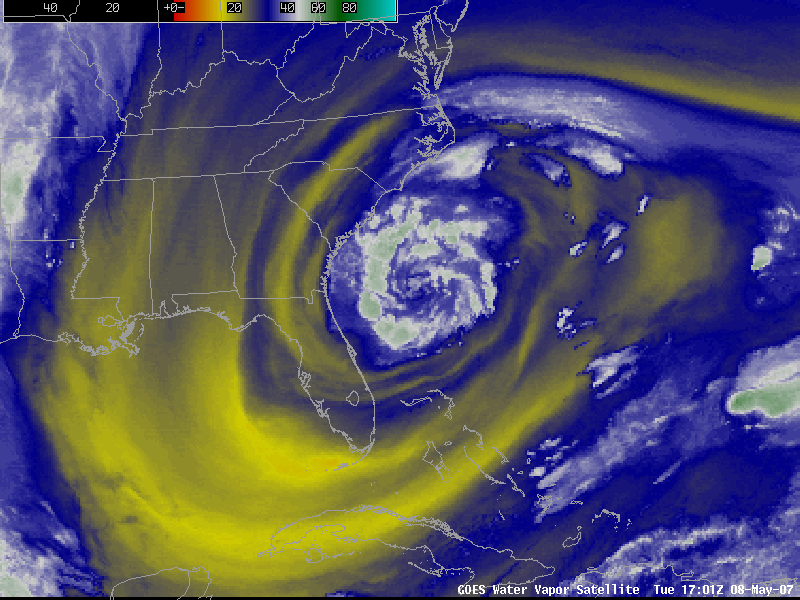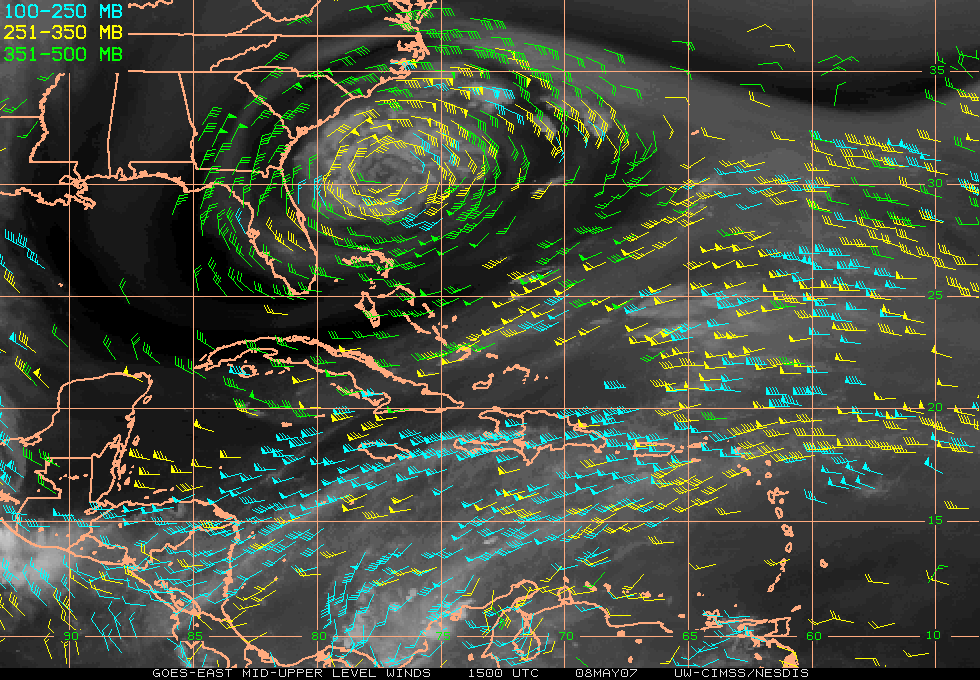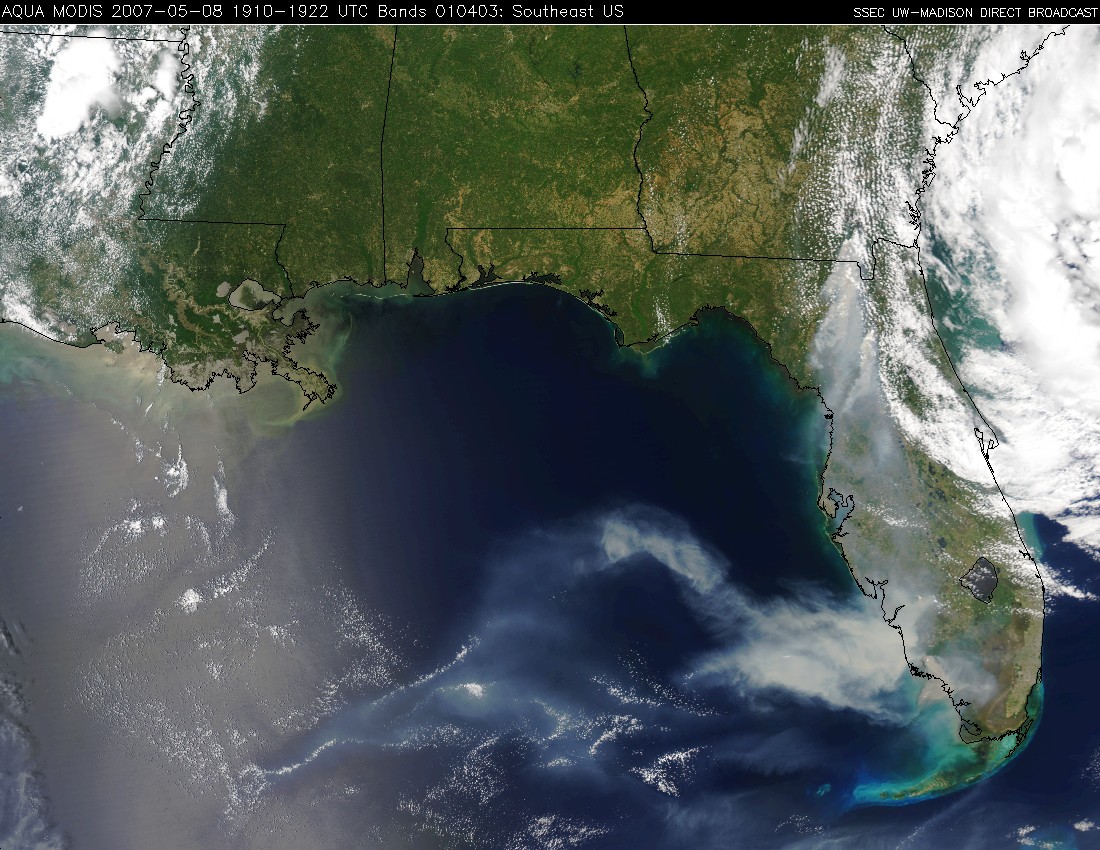Subtropical Storm Andrea
AWIPS images of the GOES-12 6.5µm “water vapor channel” (above; QuickTime animation) revealed the large size of a cyclonic circulation off the southeast US coast on 08 May 2007. This system was eventually named Subtropical Storm Andrea by the National Hurricane Center the following morning. One noteworthy aspect of Andrea was the fact that it’s formation ended the longest period recorded in the satellite era (33 days) without a tropical cyclone in any ocean basin (the last tropical cyclone was Tropical Cyclone Cliff in the South Pacific Ocean, which dissipated on 06 April 2007).
GOES-12 water vapor winds (above) showed several upper-tropospheric targets of 50 knots (57 mph) or greater in the northern quadrant of the cyclone at 15:00 UTC on 08 May — Buoy 41013 off the coast of North Carolina reported a wind gust of 48 knots (55 mph) earlier that day. The strong winds around the periphery of the storm were causing ongoing wildfires in Georgia and Florida to intensify, creating very impressive smoke plumes which drifted southward across parts of Florida and the adjacent offshore waters of the Gulf of Mexico (GOES-12 visible images: Java animation). Thick smoke (which caused air quality problems and highway closures in some areas of Florida) was also very evident on MODIS true color imagery (below) and on the MODIS Aerosol Optical Depth (AOD) product.




